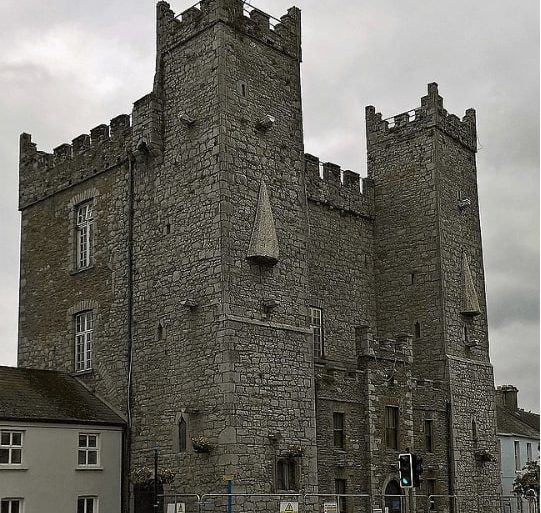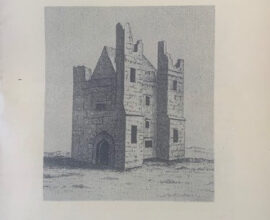Rebellion and the Battle of the Boyne
The necessity for the defences is shown by the fact that the town was besieged, and brutally captured, by Edward Bruce in 1315. The threat of attack prompted new murage grants (from 1376 onwards) for building the wall, for rebuilding and for repairs (Bradley). After the capture of the town by Bruce and later, in 1539 by Conn O’Neill, it appears that the town remained largely unchallenged until the seventeenth century. This might have been partly due to the existence of the town’s fortifications but may also have been due to its limited political activity.
During the fifteenth and sixteenth centuries, Ardee was most often used as a mustering place during government campaigns against the Ulster Irish. Two lord deputies, Sir John Stanley and James Butler (the ‘White Earl of Ormonde’), died in the town as a result of these campaigns.
In 1641 Rebellion in Ireland was largely a reaction to the ‘Plantation’ policy of the Tudor and Stuart monarchs, under which Ireland was aggressively colonised by English and Scottish settlers. The dispossessed and disaffected Irish Catholics eventually mounted the rebellion in defence of their interests and to try to recover control of the lands they had lost. In 1641 Ardee was occupied and was made headquarters of the Ulster forces by Sir Phelim O’Neill. By the end of that year the Ulster rebels had overrun most of Louth. However, in April 1642, after the relief of Drogheda, elements of the retreating Ulster army of O’Neill were resoundly beaten by Sir Henry Tichborne and Ardee was recaptured. Ardee was subsequently garrisoned by Ormonde’s men who, disobeying his orders to destroy the town, withdrew leaving the town unharmed to Cromwell in 1649.
The Irish army of King James II, after leaving Dundalk, made Ardee their headquarters for a time in 1689, the artillery bastion may have been constructed in anticipation of an encounter with the Williamites. However, on the approach of William’s forces in the autumn before the battle of the Boyne, James II and his army retreated to Drogheda. The construction of an artillery bastion outside the western wall of the town indicates that the defences were considerably remodelled in the seventeenth century, but the exact date and the extent of this work are unknown. The bastion is one of a very small number that are known on Irish town defences of this period.
Battle of the Boyne Summary

In 1685 King James II, a Catholic, became the
King of England following the death of his brother Charles II. The English
wanted a Protestant king and were determined to get rid of King James II. They
invited the Protestant prince William of
Orange of the Netherlands to take the throne. William was married to King James
II’s eldest daughter Mary Stuart. King James refused to give up his throne or
to carry out reforms that William requested. However in 1689, William of
Orange and Mary were crowned the monarchs of England. William was now king of
Ireland too.
Most Irish people wanted to get the throne back for James II. They decided to
help King James, and a war began in Ireland.
Fighting broke out in Ireland and also in Scotland, where James was from. The people who fought for King James were known as ‘Jacobites’. The people who supported William were known as ‘Williamites’. King James went to France and Ireland to get support from Catholics. James was not popular with the Protestant Irish because he removed many of them from positions of power. Many Protestants did not at first wish to support Prince William but they disliked the way James took away their power.
Fighting broke out in many places in Ireland. In 1689, the city of Derry was placed under siege by the army of King James because the soldiers there were not loyal to James and would not let his army enter the city. The siege lasted for over one hundred days causing terrible suffering to the civilians of the city. The supporters of King William eventually won and the siege was ended.
In June 1690, William of Orange landed in Carickfergus. He brought a large army with him. His army was made up of Dutch, French, Irish, Scottish and Italian soldiers and many others. William marched south towards Dublin. However, King James also had an army in Ireland at the time. Some of James’ army were Irish but others were English, Scots and French. The French King, Louis XIV gave soldiers to James as he wanted James to be king of England.
William’s army fought King James II at the Battle of the Boyne in July 1690. The leader of James’ army was Patrick Sarsfield. William of Orange won the battle and also captured the cities of Dublin and Cork. King James left Ireland for France.
Taken from County Louth Archaelogical and Historical Journal and www.askaboutireland.ie




